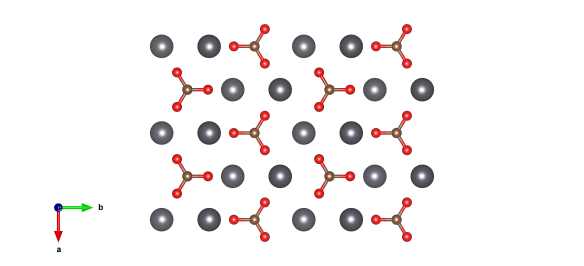Celebrating Laue – very tiny crystals
Yesterday we introduced Laue diffraction, and discussed how it is useful for rapid data collection. Today's application is a bit different – what if you've only got a very small crystal?
What does it look like?

Image generated by the VESTA (Visualisation for Electronic and STructural analysis) software http://jp-minerals.org/vesta/en/
What is it?
With the advent of more powerful synchrotron sources, this is less of a problem than it used to be. But when you only had a very tiny crystal (say about 20 microns, the size of a cell found in your glands) it was very difficult to get good enough diffraction data to determine what they were. So in 1995 a group looked at using Laue diffraction to tell between tiny crystals of minerals with similar structures. These were cerussite (lead carbonate) and strontianite (strontium carbonate). As they have very similar structures, the researchers had to examine the intensity of the diffraction peaks to tell if each tiny crystal had lead or strontium in it.
Where did the structure come from?
The structure of cerussite was originally determined by Colby and LaCoste in 1933, and is #1010956 in the Crystallography Open Database.






